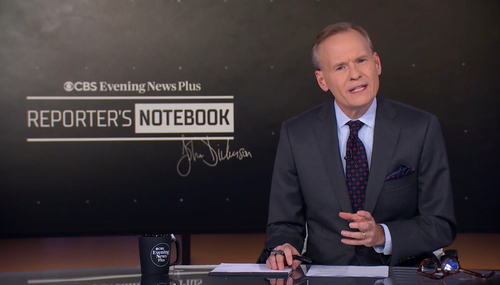 The picture dominated the front of the New York Times Thursday Styles over the title “The Fashionista.” (A cropped version of the Times photo is shown here). Who is this new impresario taking over the fashion world? The subhead: “Fidel Castro received rock star treatment and left an indelible mark on fashion when he visited New York in 1959.”
The picture dominated the front of the New York Times Thursday Styles over the title “The Fashionista.” (A cropped version of the Times photo is shown here). Who is this new impresario taking over the fashion world? The subhead: “Fidel Castro received rock star treatment and left an indelible mark on fashion when he visited New York in 1959.”
Yes, Fidel Castro, Communist dictator and fashion plate, "highly educated" and comparable to Frank Sinatra and James Dean. (And was “rock star” even a concept in 1959?)
The actual story appeared on the next page, “Chanting Crowds And a Militant Look -- Sixty years ago, radical chic came to life in a whirlwind of Cuban whiskers and khaki.”
This nauseating propaganda as fashion piece was penned by Tony Perrottet, who with this article has successfully infiltrated another seemingly unlikely Times section with Castro propaganda, a field as pointless as it is offensive, given the Communist dictator’s death in 2016.
It was like Sinatra headlining in Vegas. On April 21, 1959 -- 60 years ago this Sunday -- thousands of adoring New Yorkers gave a tumultuous welcome to a young celebrity emerging from Penn Station: Fidel Castro, leader of the Cuban guerrillas.
Less than four months earlier, he had overthrown a vicious military dictatorship after an against-all-odds campaign, and he was wildly popular in the city, drawing crowds larger than any foreign leader in its history. As throngs chanted “Fi-del, Fid-el, Fi-del,” Castro burst through police lines and began shaking hands, as if he were running for office.
He kept things shallow and surface and symbolic, never letting the dark history of Castro’s repression and impoverishing of the people he claimed to be liberating intrude.
When Castro’s photo appeared on the front page of The New York Times after his arrival, it hardly needed a caption: He was instantly recognizable for his unique sartorial style, combining military fatigues, forage cap and unkempt beard.
His 70-strong entourage was packed with khaki-clad ex-guerrillas, whose raffish facial hair had become such a powerful symbol in Cuba that they were known simply as “los barbudos” (“the bearded ones”).
“In a way, Fidel, Che and the barbudos were the first hippies,” said Jon Lee Anderson, the author of “Che: A Revolutionary Life” and a forthcoming biography of Castro. “They burst onto the scene at the dawn of the TV age as the ultimate sexy rebels. Their sum total of their ‘look,’ with long hair and beards and berets, was potent, and it played into the cultural zeitgeist.”
At the time, many young Americans were showing the first signs of disenchantment with what they saw as the leaden conformity of the Cold War era. Allen Ginsberg’s paean to freedom, “Howl,” was published in 1956; Jack Kerouac’s “On the Road” in 1957. “The Second Sex,” by Simone de Beauvoir, was in translation, and the civil rights movement was gaining pace.
For the words “Freedom” and “civil rights” to appear anywhere near the name Fidel Castro is saddening.
Perrottet found another Communist mass murderer who truly is a t-shirt icon among the more ignorant: Che Guevara.
Photos of the mysterious, handsome Argentine-born medic Ernesto Guevara, known as Che, showed that he, too, was growing his hair long and modeling a soon-to-be-famous black beret.
And it wasn’t only men. In early 1958, a Spanish photographer traveled to the Sierra Maestra for Paris Match and came back with images that included a top guerrilla leader, the M.I.T.-educated Vilma Espín, with a white mariposa bloom behind her ear, looking like a prototype flower child.
Again, Perrottet dissolves away the dross of persecution and killing, leaving only inspirational symbols of rebellion behind.
In July 1958, Espín appeared in Life toting a rifle on her hip like Cuba’s answer to Bonnie Parker, of Bonnie and Clyde fame. In a Doris Day world on the cusp of the feminist movement, the semiotics were subversive.
(Bonnie Parker participated in mass killings of police and citizens, as the Times is loathe to admit.)
The highly educated Castro was like James Dean with a progressive political agenda: a rebel with a cause.
Perrottet performed the same whitewash in January 2018 managing to talk about Castro suffering in prison under the Batista regime, without ever getting around to the inconvenient and cruel parallel: That Castro would later use that very same prison to lock up his political opponents.
A January 2019 opinion piece by Perrottet, “When Americans Loved Fidel Castro,” opened:
Sixty years ago this month, the sinister dictator Fulgencio Batista abandoned Cuba to Fidel Castro and his guerrilla army....Castro’s victory came as a complete surprise, even to him. It’s hard to remember today how the whole world was caught up in the excitement. Here was a scrappy bunch of idealistic young people who had managed to beat a professional army of 40,000 soldiers. Many Americans, even in the C.I.A., had been rooting for Castro.
If Castro ever had any ideas besides dictatorship, the persecution and killing of his political enemies, and running his country’s economy into the ground through Communist ideology, he gave them up quickly. Perrottet can’t spare a single unflattering word about the dictator Castro, while Batista is blessed with “vicious” and “sinister dictator.”




